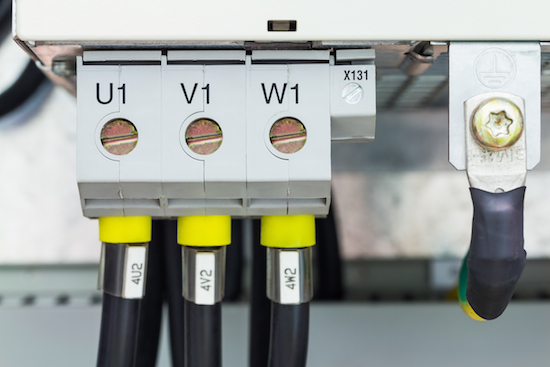Wiring and electrical installation related to residential, commercial, and industrial scenarios differ to some degree due to both applications and the scale of use. Electricians in London may have expertise in different fields or may work in varied capacities in different environments. So, what are the basic points of difference in between residential, commercial, and industrial wiring and electrical installation? Here below is a comparative study for your benefit.
Residential Scenario
Residential wiring runs within sheathed insulation with least exposure to minimize damage. Single-phase power installations are common in such scenarios. It involves two legs of 120-volts with neutral wiring. This kind of residential wiring contains 2 hot wires with red and black insulation covers and the neutral wire is white at all times. Besides, another green grounding wire is also present in single-phase residential wiring. Since, most clothes dryers, stoves, and water heaters need 240V for operations so a 2-phase circuit is also required in homes.

Commercial Scenario
As opposed to residential scenario, in commercial areas wiring generally remains exposed, albeit within conduits for protection. These environments use thermoplastic wiring with nylon high resistance coating allowing placement within the conduit. Also, specific scenarios in a commercial environment determine the choice of wires. After all, these should remain safe from damage related to volatile substances, gases, and liquids. Naturally, these come with special insulation, based on the type of hazard exposure.
In most commercial spaces, 3-phase power installation is a common feature with two legs of 120V, wide leg with 208V with neutral wire in tow. This power is necessary for efficient and smooth running of motors in such environments. Device installations related to commercial scenarios may also vary from general residential environments. Durable and resistant devices require high-grade outlets for functioning with impact resistance qualities for best results, much used commercial applications.

Industrial Scenario
Similar to the commercial grade wiring, industrial wiring also uses the three-phase power structure. Resultantly, there is less workload on each wire with enough scope for simultaneously functioning for optimizing the current output needed for heavy-duty equipment and devices. In an industrial context, wires used are small with small single-phase motors in tow. This increases durability and efficiency of the motor with high outputs. The electrical three-phase power is of FOUR types, namely,
- Common wire 3
- Common wire 4
- Special wire 4
- Hot leg grounded wire 3
Electric three-phase power works in conjunction with appropriate voltage meter for determining the available voltage. Industrial wiring requires high levels of protection for minimizing the chances of accidents and electrical hazards. Therefore, these run through raceways, metal conduits, or armored cable.
Determine your electrical requirements and contact competent electricians in London for necessary wiring and installation services!











